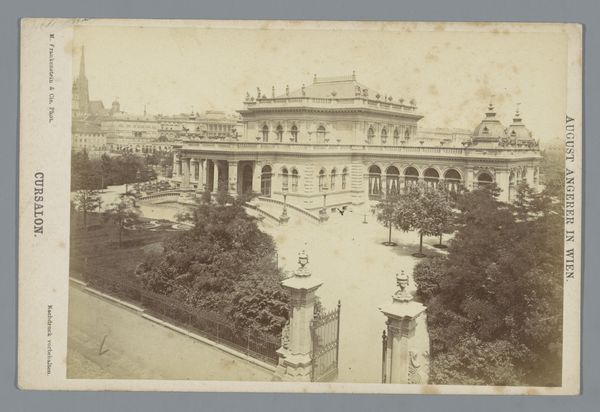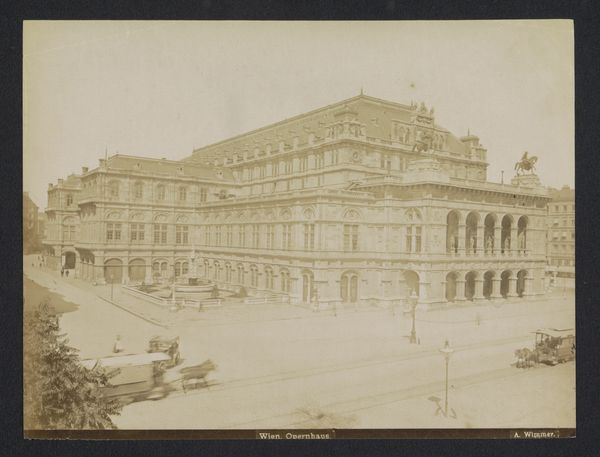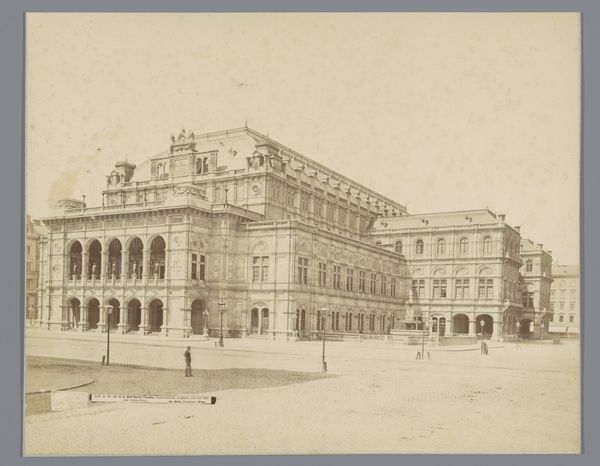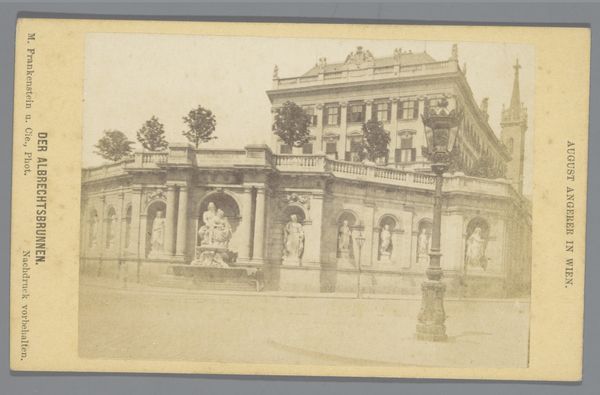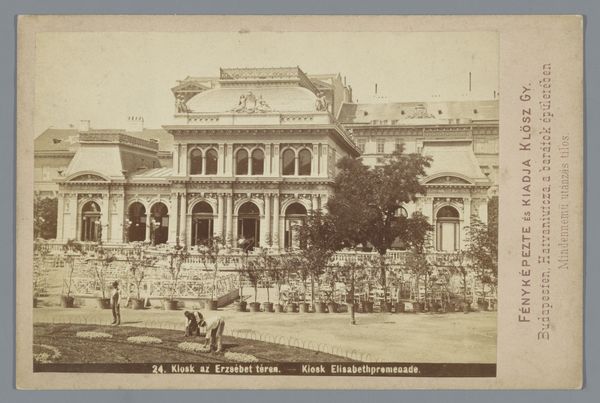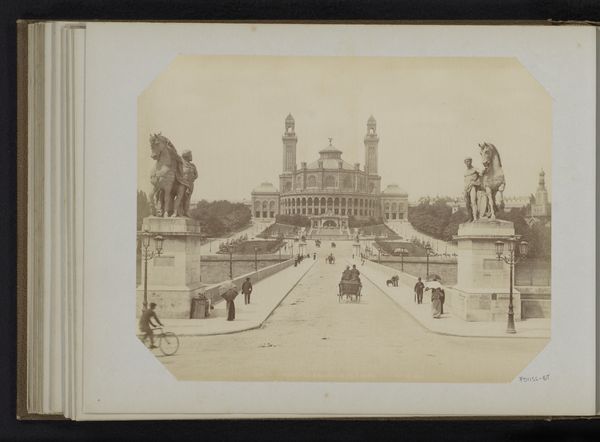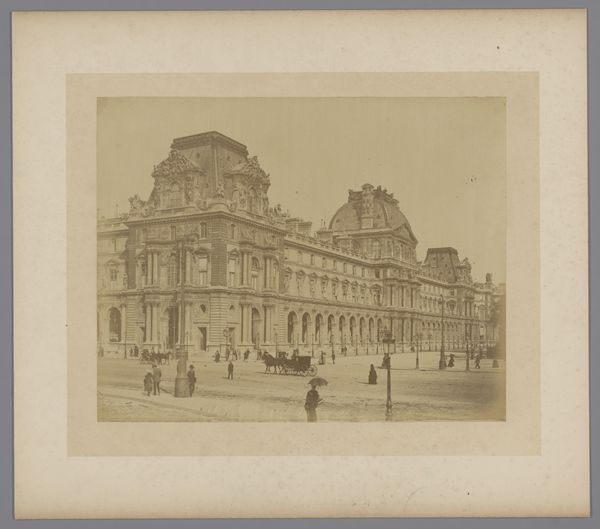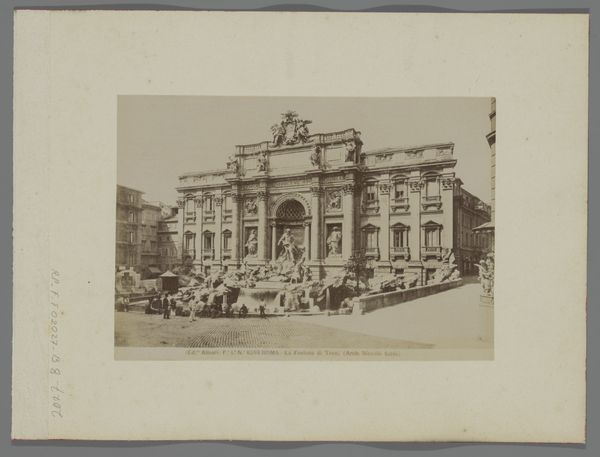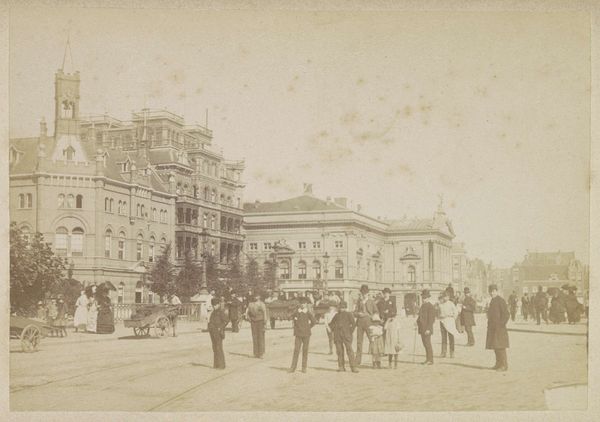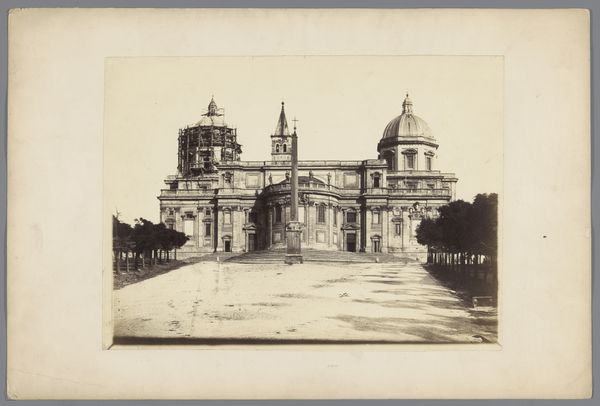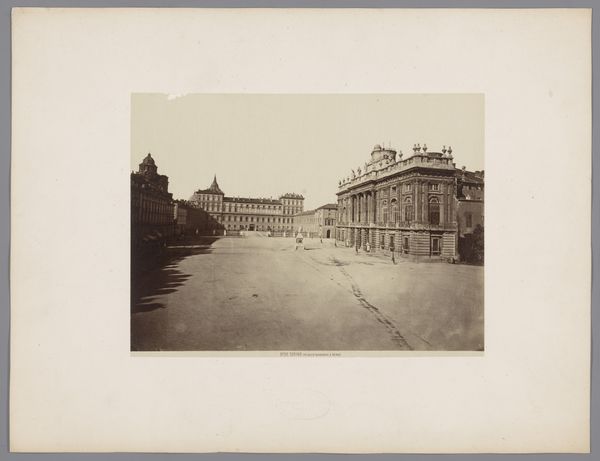
photography
#
landscape
#
photography
#
19th century
#
watercolour illustration
#
building
Dimensions: height 93 mm, width 156 mm
Copyright: Rijks Museum: Open Domain
Willem Frederik Vinkenbos made this albumen print of the first Kurhaus in Scheveningen. The albumen process, popular in the 19th century, involved coating paper with egg white and silver nitrate, then exposing it to light through a negative. The resulting print has a distinctive sepia tone and a smooth surface, and in this case, it captures the grandeur of the Kurhaus, a symbol of leisure and luxury. The photographic process was painstaking, and the final product was a testament to both technical skill and artistic vision. The rise of photography coincided with the growth of tourism and consumer culture, and images like this one played a role in shaping perceptions of places like Scheveningen. The Kurhaus itself was a product of industrialization and capitalism, catering to a wealthy clientele seeking escape and entertainment. Thinking about the image in this way helps us move beyond traditional art historical frameworks, and consider the social, economic, and technological forces that shaped its creation.
Comments
No comments
Be the first to comment and join the conversation on the ultimate creative platform.
